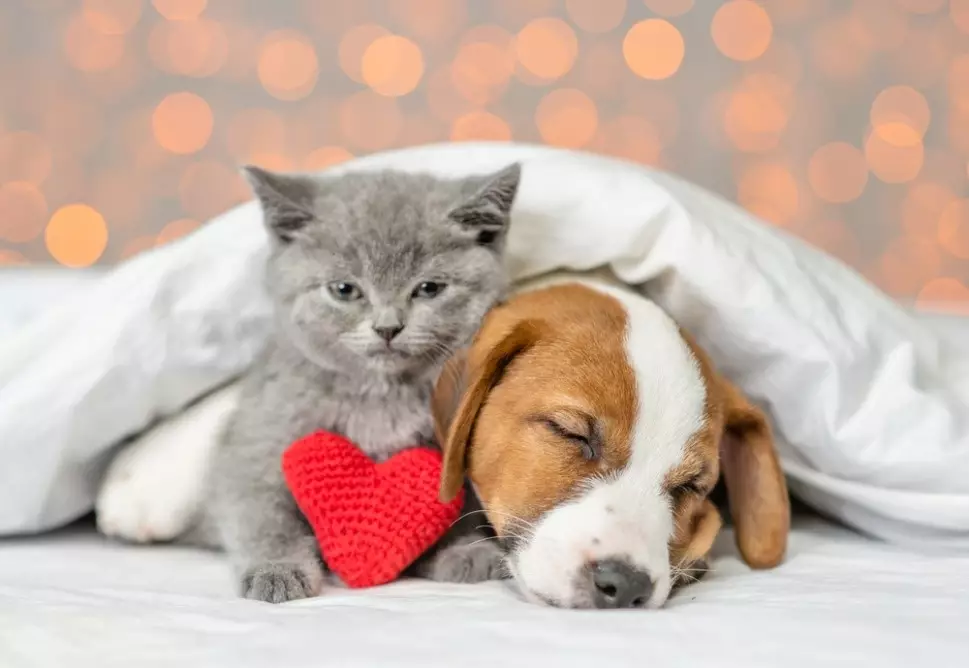Valentine’s Day is synonymous with love all around, but for pet owners, it also signals the need for caution. As we shower our partners with roses and chocolates, we often overlook the potential dangers hidden within our romantic gestures. With nearly two-thirds of households in the UK owning a pet, the stakes are high for our furry companions on this day of affection. This article will delve into the common threats posed by popular gift items during Valentine’s Day and suggest pet-safe alternatives.
While flowers bring joy and beauty to our lives, certain species can pose severe risks to pets. Among the most dangerous are lilies. These flowers, cherished for their aesthetic appeal, can have deadly consequences, particularly for cats. Amanda Takiguchi, a certified veterinarian, describes lilies as “toxic to cats, and even a small nibble can lead to acute kidney failure.”
Many pet owners may not differentiate between the various types of lilies. It’s crucial to note that while true lilies are particularly hazardous, other varieties like Lily of the Valley also present significant risks. This flower can cause heart abnormalities and seizures in both dogs and cats, making it imperative for pet owners to avoid keeping these flowers in their homes altogether.
Chocolate is frequently touted as a classic Valentine’s gift, but it poses an undeniable threat to the safety of pets. The substance theobromine found in chocolate is easily metabolized by humans but is toxic to dogs, cats, rabbits, and even birds. Symptoms of chocolate ingestion can range from mild gastrointestinal upset to severe reactions, including seizures and even death.
On Valentine’s Day, it’s essential that pet owners remain vigilant. Keep all chocolate products out of reach, ensuring that no accidental consumption occurs. The love you show through gifts should not come at the cost of your pet’s well-being.
It’s not just roses and lilies that warrant caution; several other popular flowers also pose risks. Take tulips, for instance. These beautiful blooms might brighten up a room, but they are toxic to both dogs and cats. Consumption can lead to symptoms like vomiting and diarrhea, which can rapidly escalate into more severe health concerns.
Daffodils are another common flower seen during the spring season—coinciding with Valentine’s Day promotions. However, they can be extremely poisonous to pets, causing gastrointestinal distress, particularly if the bulbs are ingested.
Roses rank high on the list for romantic gifts, but while their petals are generally not harmful, the thorns can inflict wounds, leading to potential infections if they puncture a pet’s skin. It’s wise to ensure that any purchased roses come without thorns and that you supervise your pets around any flower arrangements.
Florists often complement bouquets with ‘filler’ flowers, which may go unnoticed but can be toxic to pets. One such flower is the sweet pea. This lovely blossom, commonly used in Valentine’s bouquets, contains aminopropionitrile—potentially life-threatening for pets. Symptoms of ingestion may include seizures and severe lethargy.
Before bringing any mixed bouquets into a home with pets, it’s critical to double-check for these fillers and their associated risks.
Fortunately, pet owners can still show love through floral gifts while keeping their furry friends safe. Numerous pet-friendly options exist that not only delight but also ensure the safety of your companions. Non-toxic flowers include sunflowers, petunias, freesia, snapdragons, gerbera daisies, zinnias, pansies, and orchids. Roses can still be included in your Valentine’s Day bouquet, provided that all thorns are removed.
Offering these pet-safe alternatives not only cultivates a festive atmosphere but also alleviates the barriers of keeping pets safe from harmful substances.
As you embark on this Valentine’s Day, remember that expressions of love should never come at the expense of your pet’s safety. By understanding the dangers associated with common gifts, particularly flowers and chocolates, and opting for safer alternatives, you can celebrate this romantic occasion thoughtfully. Your affection for both your partner and your beloved pets can co-exist harmoniously this Valentine’s Day. Prioritizing their well-being ensures a joyful celebration without unforeseen emergencies.
